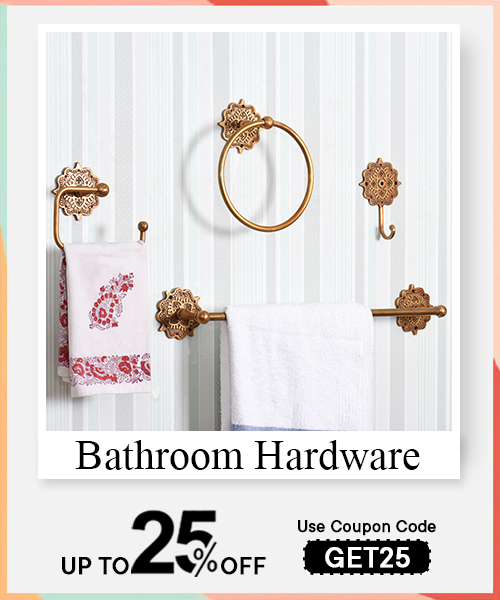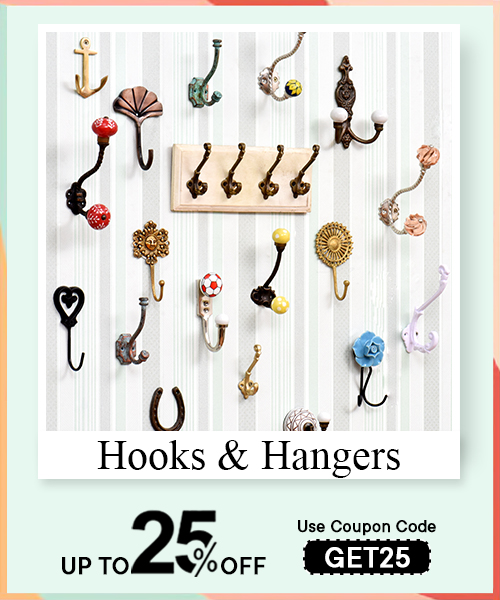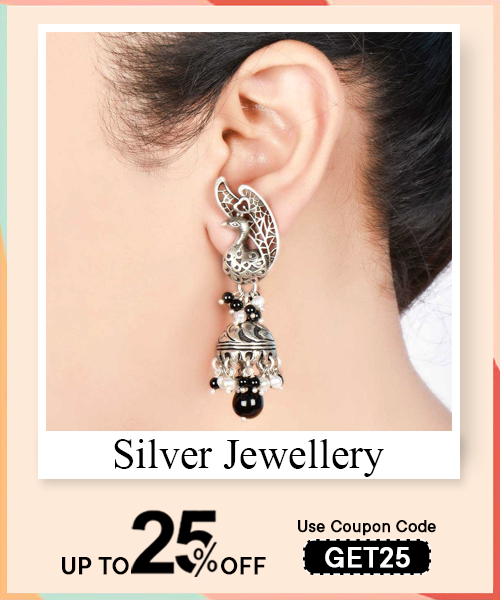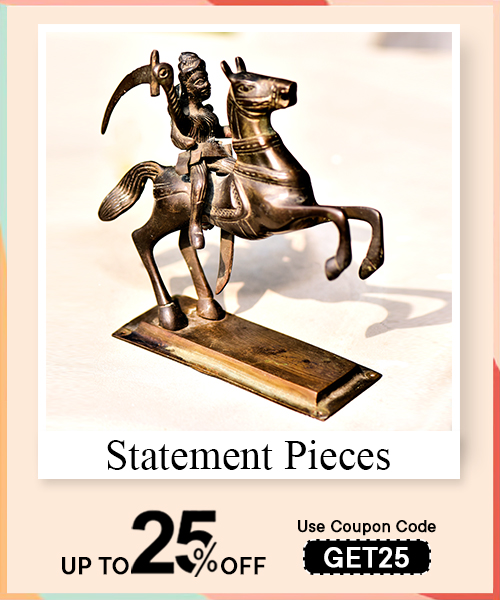Women and sometimes men have worn earrings for thousands of years. Earrings aren't just pretty jewelry; they also show someone's status, wealth, beliefs, and origins. From ancient times to today's fashion, earrings have changed a lot. They come in many styles and materials; each pair can tell a different story about our past and who we are now.
For most women, earrings are the first love after chocolates or flowers. These jeweled earrings and crystal-beaded dangling trinkets add to women's gorgeousness like nothing else. The American pop star Jennifer Lopez says, "Women should never go without earrings. Passing on them is like an opportunity missed." So, take this opportunity to dig deep into the incredible history of these jewel drops so that each time you put on a pair of earrings, you fall in love with yourself even more than ever.
Earrings have evolved significantly, transitioning from cultural and religious symbols to essential elements of a woman's daily attire and fashion accessories. These exquisite pieces are celebrated for their unique styles, intricate details, and inherent elegance. In various sizes, shapes, and designs, earrings offer women a wide selection to match their preferences.
Furthermore, earrings come in various materials, such as silver, gold, fabric, gemstones, beads, and more, allowing for endless possibilities in self-expression through jewelry. Even the slightest touch of elegance can transform women's appearance and attire. However, beyond their beauty and modern appeal, earrings possess a rich and storied past.
Read More:The Different Styles of Silver Earrings: Which One Suits You Best?
It might sound surprising initially, but in the earliest times of jewelry discovery, earrings were made as a part of men's jewelry. One of the oldest pairs of earrings discovered was found to be associated with a man's jewelry box. This man was the king of a state in Iraq. Even today, the friezes and finials of various monuments created during the Persian Empire display the carved sculptures of warriors wearing earrings, mainly hoops.
Earrings held significant cultural importance in ancient times and were worn by men and women in various civilizations. Archaeological findings reveal that men and women donned earrings in ancient Mesopotamia, Egypt, and Persia. They served not only as decorative jewelry but also as symbols of wealth and social standing.
These early earrings were crafted from gold, silver, and precious gemstones. Their designs ranged from understated studs to intricate hoops or elaborate dangling ornaments. Each style reflected the craftsmanship of its era and the cultural significance attached to personal adornment. Thus, earrings in antiquity symbolized more than just aesthetic beauty; they conveyed status, heritage, and societal roles within their respective civilizations.
Over time, especially during the Greco-Roman period and later in medieval Europe, earrings gradually became more associated with women's adornment. This shift was influenced by evolving societal norms, where earrings became increasingly seen as feminine accessories to enhance beauty and signify elegance. By the Renaissance era, earrings had firmly established themselves as a staple of women's fashion across Europe and beyond.
During the Greco-Roman period, earrings became very important in women's fashion, especially for those with high social status. These women wore earrings to look more beautiful and show their societal position. The earrings they wore were made with great care and had intricate designs. They were often decorated with precious gemstones like diamonds and rubies. These materials showed how rich they were and highlighted their influence and sophistication.
In Greco-Roman times, earrings were popular among women because they were seen as symbols of beauty, luxury, and status. They added to a woman's overall charm and elegance, making them essential fashion accessories for women of high standing back then.

As societies developed hierarchies, jewelry, like earrings, became status symbols. Women in royal courts and elite circles wore earrings to display their wealth and show they were fashionable. Earrings became even more popular in the Middle Ages and Renaissance as craftsmanship improved and trade expanded.
In the Bronze Age (around 3300–1200 BCE), earrings were mainly made from bronze and other metals found in that area. They had simple designs, often with shapes or symbols that reflected religious beliefs and cultural practices. Both men and women in places like Mesopotamia, Egypt, and ancient Greece wore these earrings. They were seen as symbols of status or as charms for protection. Similarly, in Mesopotamia and the Indus Valley Civilization, earrings were indicators of social standing among the elite. They were worn during important rituals and ceremonies to display wealth and authority. Thus, earrings were adornments and powerful symbols of prestige and influence in ancient societies.
Read More:Buying Silver Jewellery in Sawan: Auspicious Time to Invest in the Metal
In ancient Egyptian culture, earrings held deep significance. Crafted from gold, silver, and precious gemstones, these earrings represented wealth and status and carried strong religious beliefs. They were believed to protect the wearer and strengthen their spiritual connection to the divine.
Earrings in ancient Egypt served a dual purpose, reflecting social hierarchy and spiritual beliefs. Commoners typically wore more straightforward earrings made from wood or copper, contrasting with the elaborate designs flaunted by the elite, adorned with gemstones and symbolic patterns. The tradition of burying earrings with the deceased emphasized their importance, signifying their role in life and the afterlife. Thus, earrings in ancient Egypt were not merely fashionable accessories but also potent symbols deeply intertwined with social standing and religious customs.
In European regions, earrings were primarily worn by lavish and wealthy women. A pair of pearl earrings depicted a royal status in society. Soon, enough anglers and designer earrings began to come in. Among the Roman Empire, conical-shaped earrings were popular among Greeks. Victorians were still experimenting with their Byzantine art style. You will find their Victorian-style Etruscan earrings still in vogue these days.
In the ancient period, the metal gold was considered synonymous with the rays of the Sun. Gold became the center of attention for jewelry designers due to its royal appeal and divine luster. Gold has always been a symbol of wealth and prosperity. Wearing gold earrings signifies affluence and high social status. Gold is highly durable and does not quickly lose its shine. Its lasting beauty and ability to retain its luster make it highly desirable for creating enduring pieces of jewelry like earrings.
Gold is versatile and can be shaped into intricate designs. It can also be combined with gemstones or other materials to create unique and exquisite earrings; gold holds deep cultural and symbolic significance in many cultures worldwide. It is often associated with gods, royalty, and blessings from the divine. Earrings made from gold carry these symbolic meanings.

Gold is also valued as an investment and store of wealth. Earrings made from gold are beautiful adornments and retain their value over time, making them precious heirlooms passed down through generations. You might have heard the tale that the prince Siddhartha Gautam, aka Buddha, used to wear heavy gold earrings in his ears before his spiritual bequests. It is said that his long earlobes resulted from the wealth of his kingdom, which is depicted in the heaviness of his gold earrings.
Other regions created earrings from gold wires twisted, spiraled, or scrolled to give various shapes and designs. Other styles included thick stamped gold flakes, clusters of beads dipped in gold foils, gold filigree, and even gold coins containing motifs of peacocks, flowers, swans, doves, birds, lions, bulls, gazelles, elephants, etc.
Earrings have woven themselves into the fabric of human history, culture, and evolution. Ear piercing for adornment dates back to ancient times, evidenced by earrings in places like Lothal, India, part of the ancient Indus Valley Civilization, crafted from gold, lapis lazuli, and carnelian. These vintage earrings from civilizations like Greece and Persia were often fashioned from gold, silver, and bronze, each symbolizing the era's unique artistry. Intricate designs, such as hoop earrings featuring motifs like doves and grapes or hammered gold earrings, adorned both men and women, reflecting social status and regional styles.
In the Middle Ages, earrings adorned the royalty and elite, often designed to complement elaborate hairstyles and luxurious garments. However, during the 13th and 14th centuries, earrings fell out of favor, primarily due to the influence of the Catholic Church, which deemed them unnecessary adornments.
The Renaissance era (14th-17th century) marked a significant shift in the modernization of earrings, fueled by the resurgence of arts and culture. Earrings became more elaborate, featuring precious gems, pearls, and intricate metalwork. This period saw a renewed appreciation for personal adornment, with earrings becoming essential accessories for both men and women of high society.
By the late 17th and 18th centuries, earrings had evolved further, reflecting the opulence of the Baroque and Rococo periods. Designs became more intricate and extravagant, with a focus on ornate detailing and the use of diamonds and other precious stones. The emergence of clip-on earrings in the early 20th century revolutionized accessibility, making earrings more popular among women of various social strata. Earrings had transitioned from simple adornments to symbols of fashion, status, and personal expression.
By the 20th century, earrings had become essential in women's fashion. The advent of clip-on earrings in the early 1900s made them accessible to those who preferred not to pierce their ears. This innovation coincided with the Art Deco movement, which introduced bold geometric designs and a mix of materials like Bakelite and Lucite. Earrings evolved through various styles in the mid to late 20th century, reflecting changing fashion trends and cultural influences, from the mod styles of the 1960s to the bold, statement earrings of the 1980s.
In modern times, earrings have become versatile accessories that cater to diverse tastes and preferences. While traditional gold and diamond earrings continue to be cherished for their timeless elegance, contemporary designs now embrace a wide range of materials, including precious gemstones, semi-precious stones, pearls, and even innovative materials like titanium and stainless steel. This shift has expanded the accessibility and affordability of earrings, making them an essential part of everyday fashion.
Today, earrings are not only about aesthetics but also about self-expression. People wear them to showcase their style, cultural heritage, or even personal beliefs. The rise of body-positive and inclusive fashion movements has further broadened the scope of earring designs, ensuring something for everyone. Earrings have truly come a long way from their ancient origins, evolving into versatile and symbolic adornments that continue to play a significant role in modern fashion and culture.
Read More:How to Create a Timeless Silver Jewellery Collection
In the late 20th and early 21st centuries, there has been a resurgence of interest in vintage and antique earrings, with many people appreciating the craftsmanship and historical significance of older designs. At the same time, contemporary designers continue to push the boundaries of earring design, experimenting with new materials, shapes, and styles to create pieces that reflect the ever-evolving nature of fashion and personal expression. Today, earrings are a ubiquitous accessory worn by people of all ages, genders, and backgrounds, showcasing the enduring appeal and versatility of these timeless adornments.
















